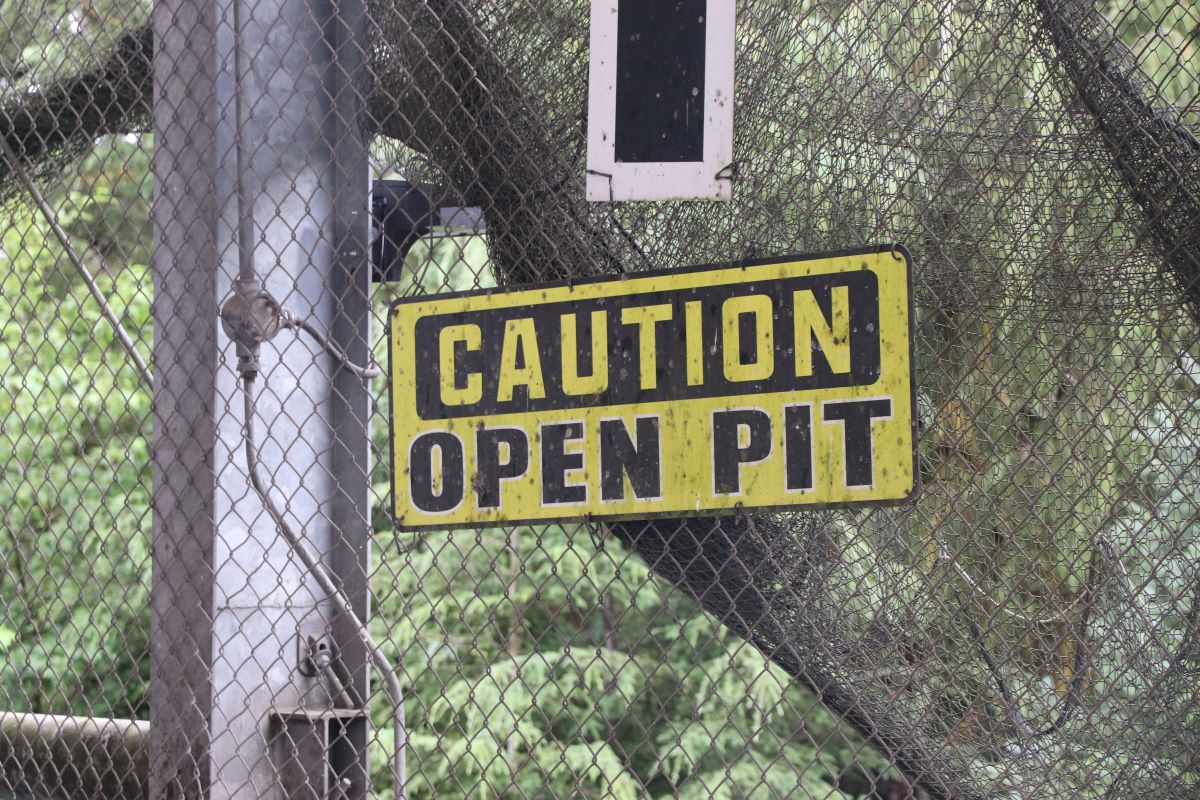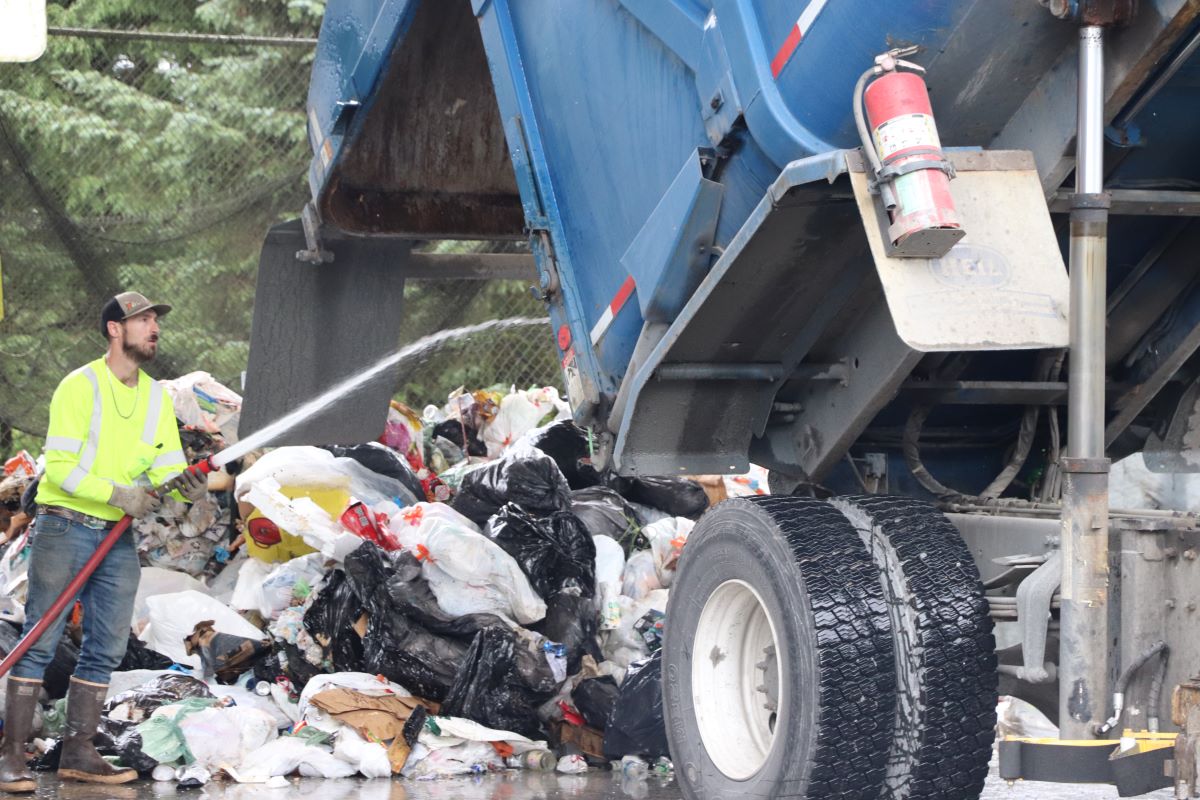
Remember in Star Wars when Leia, Luke, Han Solo and Chewy fall down a garbage chute while sneaking around the Death Star? They land in a trash heap, brown water up to their knees, where some space monster we never really see, save a lime green eyeball and a lone tentacle, is lurking just below the surface.
But that’s the least of their problems when the walls start closing in on them– they’ve found themselves at the bottom of a giant trash compactor (Fortunately the heroes managed to escape the Empire’s trash compactor relatively unscathed). It’s hard to not think of this scene when I visit the transfer station in Sitka to get a glimpse of the city’s new solid waste compactor. After all, the Death Star was kind of like an island. They probably had to ship their solid waste to Tatooine.
“Definitely kind of reminds me of Star Wars,” I tell Mike Stenberg, the maintenance and operations superintendent for the city. He agrees that it’s a little dystopian.
I quickly discover that the transfer station is a pretty loud place to do an interview. Every few minutes a truck backs into the covered garage to dump a load of garbage for the compactor to crush. It doesn’t smell as bad as I thought it would.
“We’re fortunate because we’re usually you know, 50-ish degrees. So right now, this time of year is slightly above a milk cooler,” Stenberg says, and laughs. “Putrefaction doesn’t happen so fast.”
It might also be, in part, because they have a new system. Until this year, the city was pushing garbage into open top shipping containers. Then they’d use an excavator bucket to press the garbage down manually. Sitka’s solid waste is shipped out by barge and then driven to a landfill in Eastern Washington.

In 2020, Alaska Marine Lines announced it would no longer allow several Southeast communities, including Sitka, to ship garbage out in open topped containers with limited compaction. They said it was part of an effort to reduce the risk of shipping fires at sea.
“They feel more comfortable with us using this closed container, and so we hope that helps improve that as well. I mean, we don’t want to be the the reason for a fire,” Stenberg says. “But you know, that’s also a great point to bring up that we have to be careful as a community.”
Compaction into a closed off space reduces the smell, and it has some other added benefits. Before the compactor was installed, they were struggling to manage the wildlife at the station. It was a scavenger bird paradise. And bears even got their share of the action.
“We did actually have bear issues where they were literally getting into the container itself and getting trapped in the container,” Stenberg says. “So they get down in there. And yeah, that’s kind of a bad deal.”
The new compactor does have its limits though. First, it can only fit items that are less than seven feet long.
“What about a car, if a car is less than seven feet long? Could it crush a car?” I ask.
“It’s strong enough to do some really, really amazing things,” Stenberg says. “But your car and metals are not permitted in the compactor.”
Flammable materials, concrete, and other hazardous materials also aren’t permitted in the compactor. It’s an expensive piece of equipment. Including installation and shipping from Oregon, the new system cost the city around $3 million dollars. But Stenberg says the hope is that compacting garbage more efficiently into fewer shipping containers will save the city money in the long run. Time and data will tell.
“I’m really excited about the new equipment and what it means for our community,” Stenberg says. “We’ve made a large investment in this process and in this new compacter, and I want to make sure that our community gets our money’s worth out of it.”
And while it’s not the perfect solution to expensive solid waste in Sitka, Stenberg says the compactor will help control costs right now. One day, a more robust recycling program and reducing consumption could play a bigger role, but that future is far, far away.
The compactor has been up and running for a couple of weeks, and solid waste staff are gearing up for heavy use. Sitka’s annual community cleanup is August 19.






























